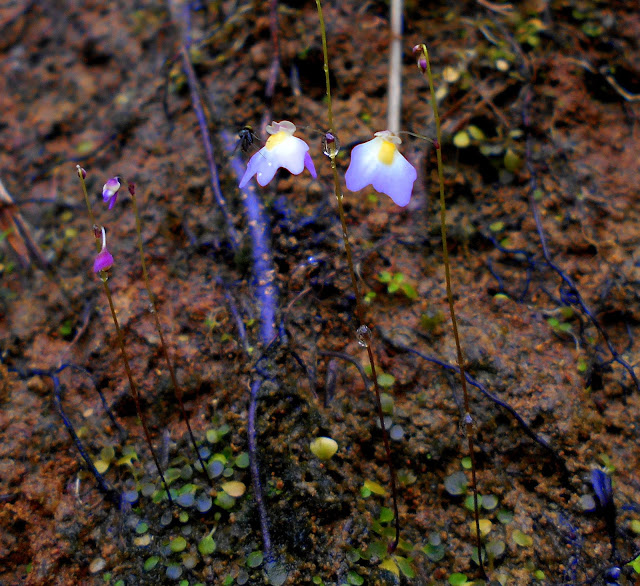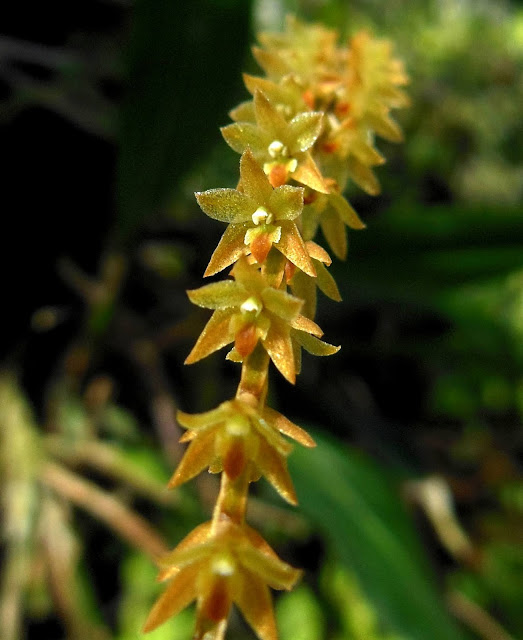A chance encounter with Utricularia striatula

I and my Swedish stepbrother Simon recently had the pleasure to be a part of a fishing expedition with two friends in a remote location along the Agos River in the province of Quezon. Pitching our tents in a sandy riverbank, we set up our nets and began exploring our surroundings. Justin, an American who has been living in the Philippines, crossed the other side of the river where he found populations of the bladderwort Utricularia striatula , a species that is found from Luzon to the Visayas and Mindanao but with very patchy and highly localized distribution. I have observed this species in two ultramafic sites in Zambales a few years ago, but this species can also occur in soils with underlying mafic rocks. Later that afternoon, Justin, Simon, and I set off to botanize the length of the riverbank from where we erected our tents and, unsurprisingly, we found more of these tiny carnivores living amongst sparse grasses, mosses, and some emersed vegetation. They were rooted on mud







